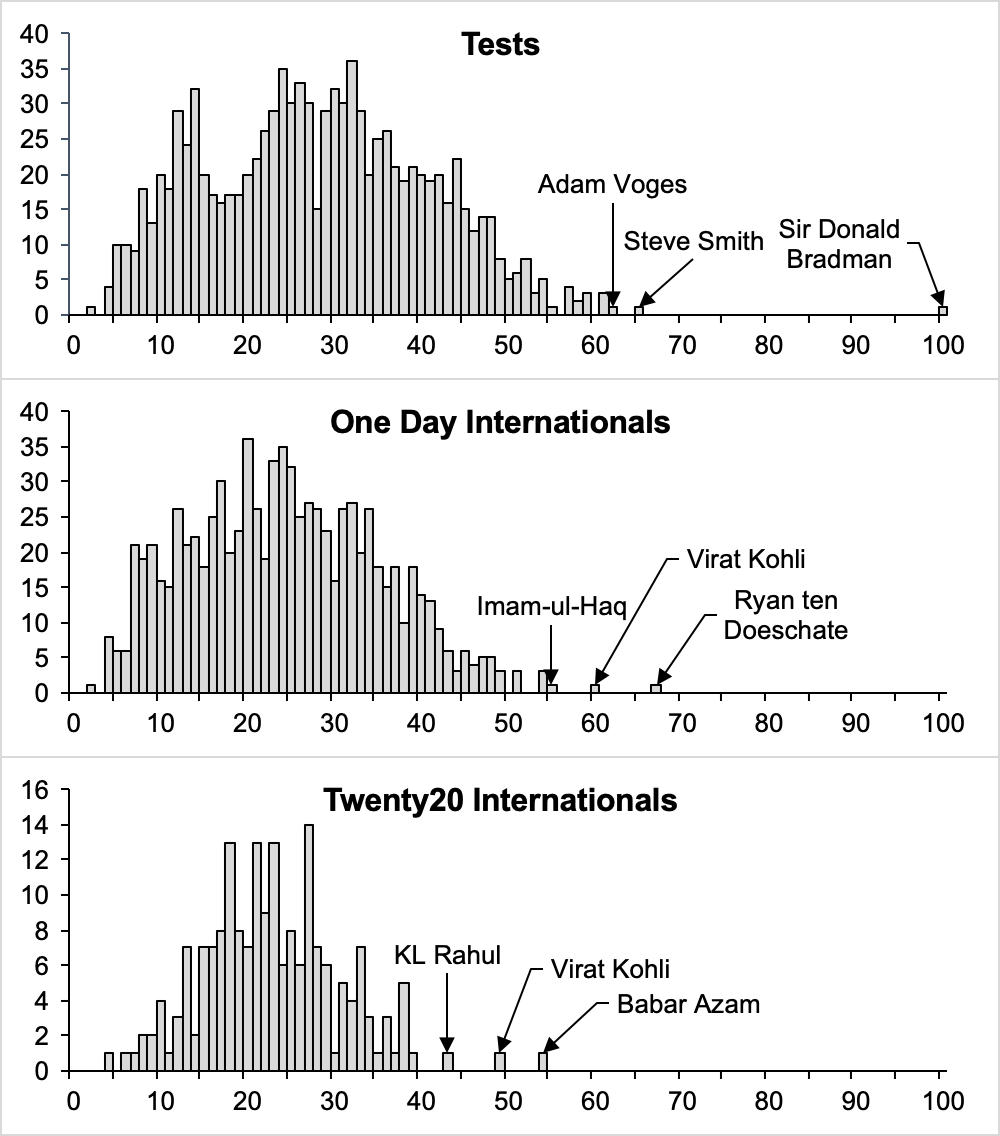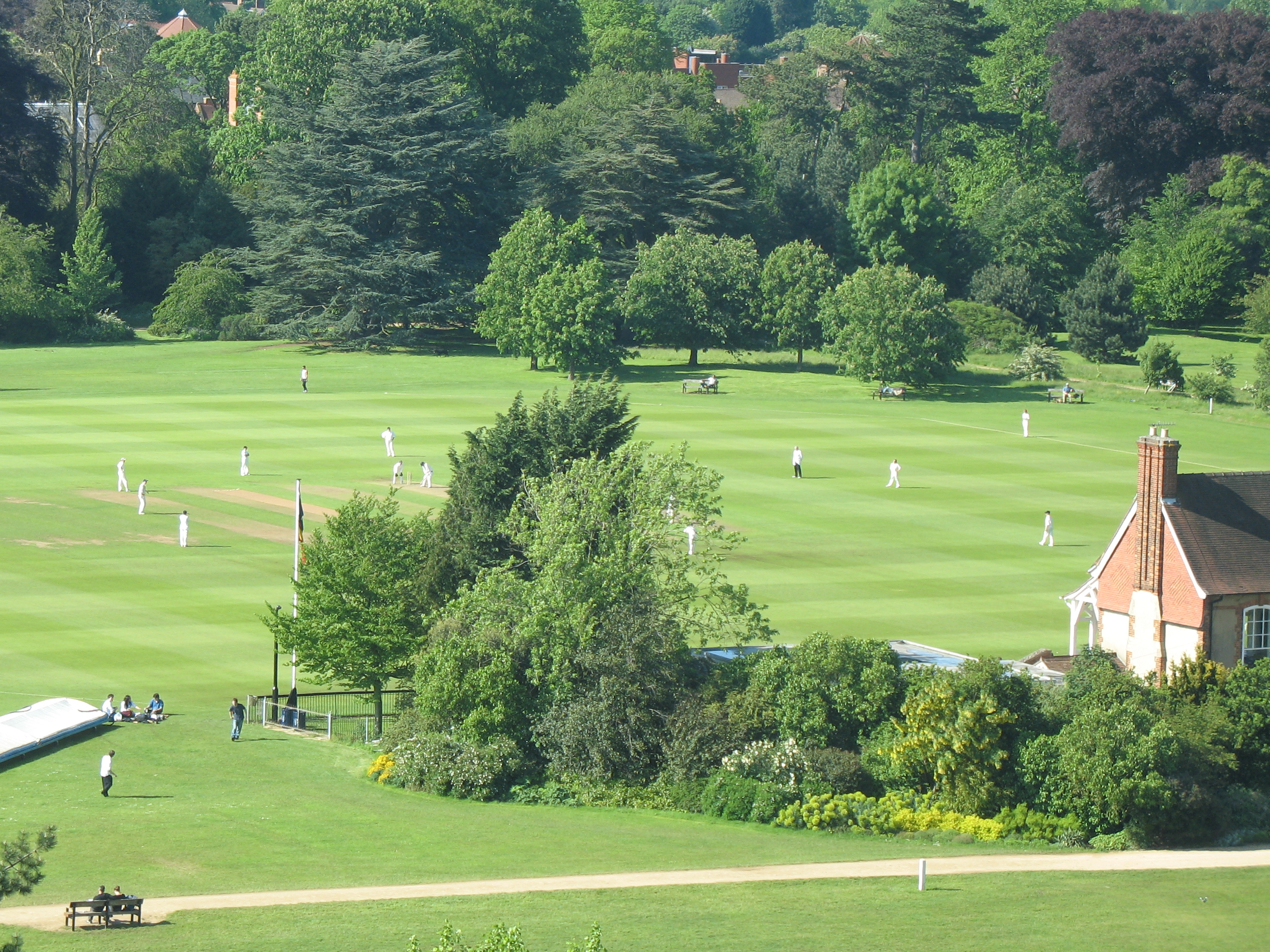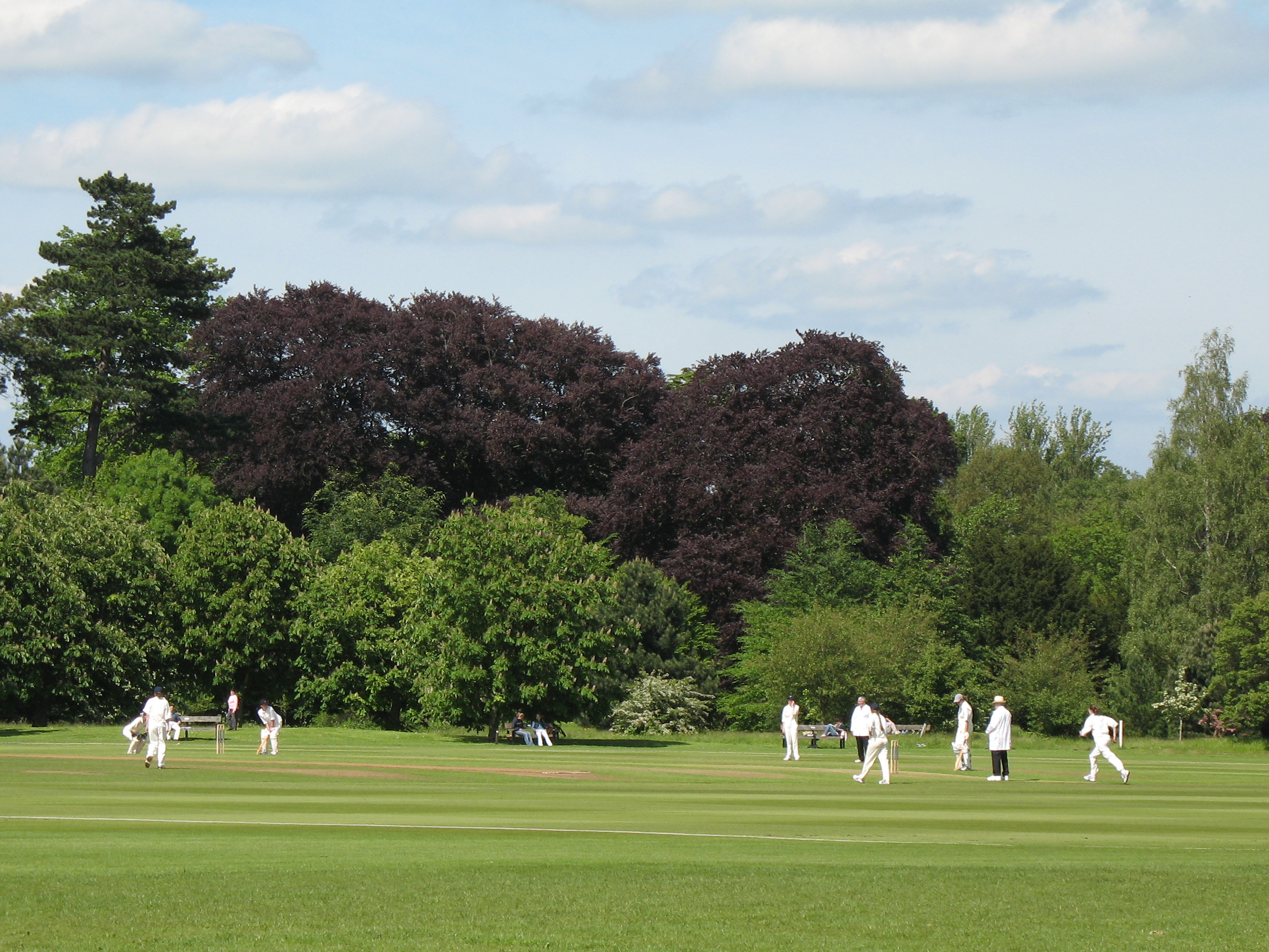|
Martin Corke
Martin Dewe Corke OBE (8 June 1923 – 14 January 1994) was an English cricketer. Corke was a right-handed batsman. He was also a prominent member of the Greene King Brewery. Early life A member of the Greene brewing dynasty, Corke was born at the hill station of Murree in the British Raj, where his father, then Captain Francis Sinclair Corke, was serving with the 1st battalion 16th Punjab Regiment. He was sent home from the Raj to be educated in England, where he attended Radley School, during which time he captained the school's cricket team. By age fifteen he was working at the family brewery in Bury St Edmunds, Suffolk. However, with the start of World War II in 1939, Corke returned to the Raj to be with his parents. He was commissioned in his father's 16th Punjab Regiment in 1942 then later promoted lieutenant. In 1944, he was struck down with tuberculosis, which ended his time in the British Indian Army. Cricket and later life Returning to England, he married Jean Arm ... [...More Info...] [...Related Items...] OR: [Wikipedia] [Google] [Baidu] |
Murree
Murree (Punjabi, Urdu: مری) is a mountain resort city, located in the Galyat region of the Pir Panjal Range, within the Muree District of Punjab, Pakistan. It forms the outskirts of the Islamabad-Rawalpindi metropolitan area, and is about northeast of Islamabad. It has average altitude of . The British built this town during their rule to escape the scorching heat in the plains of Punjab during the summer. Construction of the town was started in 1851 on the hill of Murree as a sanatorium for British troops. The permanent town of Murree was constructed in 1853 and the church was consecrated shortly thereafter. One main road was established, commonly referred to even in modern times, as the mall. Murree was the summer headquarters of the colonial Punjab Government until 1876 when it was moved to Shimla. Murree became a popular tourist station for British citizens of the British Raj. Several prominent Britons were born here including Bruce Bairnsfather, Francis Younghusb ... [...More Info...] [...Related Items...] OR: [Wikipedia] [Google] [Baidu] |
George Denholm Armour
George Denholm Armour (1864–1949) was a British painter and illustrator.Horace Laffaye, ''Polo in Britain: A History'', Jefferson, North Carolina: McFarland & Company, Inc., 2012, pp. 145-146 During his career he made hundreds of illustrations for ''The Graphic'', ''Punch'' and '' Country Life'', most connected with horses and riding. His work was part of the art competitions at the 1928 Summer Olympics, the 1932 Summer Olympics, and the 1948 Summer Olympics. Early life George Denholm Armour was born in Waterside or Carmunnock, Lanarkshire, Scotland on 30 January 1864, to parents Robert Armour and Marion Paterson, and had several brothers and sisters. He grew up in Liverpool and went to school in Fife. He graduated from the University of St Andrews and the Edinburgh College of Art. Career He moved to Tangiers, Morocco, to paint and buy horses. When his money ran out, he moved to London and shared a studio with Phil May. He met Joseph Crawhall III on a hunting and painti ... [...More Info...] [...Related Items...] OR: [Wikipedia] [Google] [Baidu] |
Magistrate
The term magistrate is used in a variety of systems of governments and laws to refer to a civilian officer who administers the law. In ancient Rome, a ''magistratus'' was one of the highest ranking government officers, and possessed both judicial and executive powers. In other parts of the world, such as China, a magistrate was responsible for administration over a particular geographic area. Today, in some jurisdictions, a magistrate is a judicial officer who hears cases in a lower court, and typically deals with more minor or preliminary matters. In other jurisdictions (e.g., England and Wales), magistrates are typically trained volunteers appointed to deal with criminal and civil matters in their local areas. Original meaning In ancient Rome, the word ''magistratus'' referred to one of the highest offices of state. Analogous offices in the local authorities, such as '' municipium'', were subordinate only to the legislature of which they generally were members, ''ex officio'' ... [...More Info...] [...Related Items...] OR: [Wikipedia] [Google] [Baidu] |
Half Century
One half ( : halves) is the irreducible fraction resulting from dividing one by two or the fraction resulting from dividing any number by its double. Multiplication by one half is equivalent to division by two, or "halving"; conversely, division by one half is equivalent to multiplication by two, or "doubling". One half often appears in mathematical equations, recipes, measurements, etc. Half can also be said to be one part of something divided into two equal parts. For instance, the area ''S'' of a triangle is computed. :''S'' = × perpendicular height. One half also figures in the formula for calculating figurate numbers, such as triangular numbers and pentagonal numbers: : \frac and in the formula for computing magic constants for magic squares : M_2(n) = \frac \left(n^ + 1\right) The Riemann hypothesis states that every nontrivial complex root of the Riemann zeta function has a real part equal to . One half has two different decimal expansions, ... [...More Info...] [...Related Items...] OR: [Wikipedia] [Google] [Baidu] |
Batting Average (cricket)
In cricket, a player's batting average is the total number of runs they have scored divided by the number of times they have been out, usually given to two decimal places. Since the number of runs a player scores and how often they get out are primarily measures of their own playing ability, and largely independent of their teammates, batting average is a good metric for an individual player's skill as a batter (although the practice of drawing comparisons between players on this basis is not without criticism). The number is also simple to interpret intuitively. If all the batter's innings were completed (i.e. they were out every innings), this is the average number of runs they score per innings. If they did not complete all their innings (i.e. some innings they finished not out), this number is an estimate of the unknown average number of runs they score per innings. Each player normally has several batting averages, with a different figure calculated for each type of matc ... [...More Info...] [...Related Items...] OR: [Wikipedia] [Google] [Baidu] |
University Parks
The Oxford University Parks, commonly referred to locally as the University Parks, or just The Parks, is a large parkland area slightly northeast of the city centre in Oxford, England. The park is bounded to the east by the River Cherwell, though a small plot of land called Mesopotamia sits between the upper and lower levels of the river. To the north of the parks is Norham Gardens and Lady Margaret Hall, to the west the Parks Road, and the Science Area on South Parks Road to the south. The park is open to the public during the day, and has gardens, large sports fields, and exotic plants. It includes a cricket ground used by Oxford University Cricket Club. History Part of the land on which the Parks is located had been used for recreation for a long time, and it formed part of the University Walks said to have been used by Charles II to walk his dog in 1685. The land originally belonged to Merton College, and in 1853/1854, the University of Oxford purchased from Merton ... [...More Info...] [...Related Items...] OR: [Wikipedia] [Google] [Baidu] |
Oxford University Cricket Club
Oxford University Cricket Club (OUCC), which represents the University of Oxford, has always held first-class status since 1827 when it made its debut in the inaugural University Match between OUCC and Cambridge University Cricket Club (CUCC). It was classified as a List A team in 1973 only. Home fixtures are played at the University Parks slightly northeast of Oxford city centre. History The earliest reference to cricket at Oxford is in 1673. OUCC made its known debut in the inaugural University Match between Oxford and Cambridge played in 1827. In terms of extant clubs being involved, this is the oldest major fixture in the world: i.e., although some inter-county fixtures are much older, none of the current county clubs were founded before 1839 (the oldest known current fixture is Kent ''versus'' Surrey). The Magdalen Ground was used for the University Cricket Club's first match in 1829, and remain in regular use until 1880. Bullingdon Green was used for two matches i ... [...More Info...] [...Related Items...] OR: [Wikipedia] [Google] [Baidu] |
Fenner's
Fenner's is Cambridge University Cricket Club's ground. History Cambridge University Cricket Club had previously played at two grounds in Cambridge, the University Ground and Parker's Piece. In 1846, Francis Fenner leased a former cherry orchard from Gonville and Caius College for the purpose of constructing a cricket ground. In 1848 he sub-let the ground to Cambridge University Cricket Club. Fenner's first hosted first-class cricket in 1848, with Cambridge University playing against the Marylebone Cricket Club (MCC). A 40 foot wooden pavilion, painted blue, with a slated roof had been erected by the 1856 season. Fenner's is also home to the Cambridge MCC University side, a partnership between the University of Cambridge, Anglia Ruskin University and the Marylebone Cricket Club established ahead of the 2010 season. Facilities As well as the cricket ground, there is a 3-lane indoor cricket school. The groundsman pioneered the art of mowing grass in strips to create patter ... [...More Info...] [...Related Items...] OR: [Wikipedia] [Google] [Baidu] |
Cambridge University Cricket Club
Cambridge University Cricket Club, first recorded in 1817, is the representative cricket club for students of the University of Cambridge. Depending on the circumstances of each individual match, the club has always been recognised as holding first-class status. The university played List A cricket in 1972 and 1974 only. It has not played top-level Twenty20 cricket. With some 1,200 members, home matches are played at Fenner's. The club has three men's teams (Blues, Crusaders and the Colleges XI) and one women's team which altogether play nearly 100 days of cricket each season. The inaugural University Match between Cambridge and Oxford University Cricket Club was played in 1827 and the match was the club's sole remaining first class fixture each season until 2020. The club has also operated as part of the Cambridge University Centre of Cricketing Excellence (Cambridge UCCE) which included players from Cambridge University and was Anglia Polytechnic University, now Anglia Ru ... [...More Info...] [...Related Items...] OR: [Wikipedia] [Google] [Baidu] |
Free Foresters Cricket Club
Free Foresters Cricket Club is an English amateur cricket club, established in 1856 for players from the Midland counties of England. It is a 'wandering' (or nomadic) club, having no home ground. The Free Foresters were founded by the Rev. William Kirkpatrick Riland Bedford, who had been appointed rector of Sutton Coldfield in 1850. At Oxford University, he had discovered cricket and in 1847 he had set up the Sutton Coldfield Cricket Club. The name of the Free Foresters was chosen to reflect that archery had been popular at the Rectory Park long before cricket was introduced. The club played its first match on 20 July 1856 against the Pilgrims of the Dee, at the Rectory Ground in Sutton Coldfield. In 1863, the Free Foresters presented the rector with a silver salver as a token of their esteem. The salver can be seen at Lord's cricket ground. For many years, starting in 1912, their matches against Oxford University and Cambridge University had first-class status, the last su ... [...More Info...] [...Related Items...] OR: [Wikipedia] [Google] [Baidu] |
First-class Cricket
First-class cricket, along with List A cricket and Twenty20 cricket, is one of the highest-standard forms of cricket. A first-class match is one of three or more days' scheduled duration between two sides of eleven players each and is officially adjudged to be worthy of the status by virtue of the standard of the competing teams. Matches must allow for the teams to play two innings each, although in practice a team might play only one innings or none at all. The etymology of "first-class cricket" is unknown, but it was used loosely before it acquired official status in 1895, following a meeting of leading English clubs. At a meeting of the Imperial Cricket Conference (ICC) in 1947, it was formally defined on a global basis. A significant omission of the ICC ruling was any attempt to define first-class cricket retrospectively. That has left historians, and especially statisticians, with the problem of how to categorise earlier matches, especially those played in Great Britain ... [...More Info...] [...Related Items...] OR: [Wikipedia] [Google] [Baidu] |
Captain (cricket)
The captain of a cricket team, often referred to as the skipper, is the appointed leader, having several additional roles and responsibilities over and above those of the other players. As in other sports, the captain is usually experienced and has good communication skills, and is likely to be one of the most regular members of the team, as the captain is responsible for the team selection. Before the game the captains toss for innings. During the match the captain decides the team's batting order, who will bowl each over, and where each fielder will be positioned. While the captain has the final say, decisions are often collaborative. A captain's knowledge of the complexities of cricket strategy and tactics, and shrewdness in the field, may contribute significantly to the team's success. Due to the smaller coaching/management role played out by support staff, as well as the need for greater on-field decision-making, the captain of a cricket team typically shoulders more r ... [...More Info...] [...Related Items...] OR: [Wikipedia] [Google] [Baidu] |








